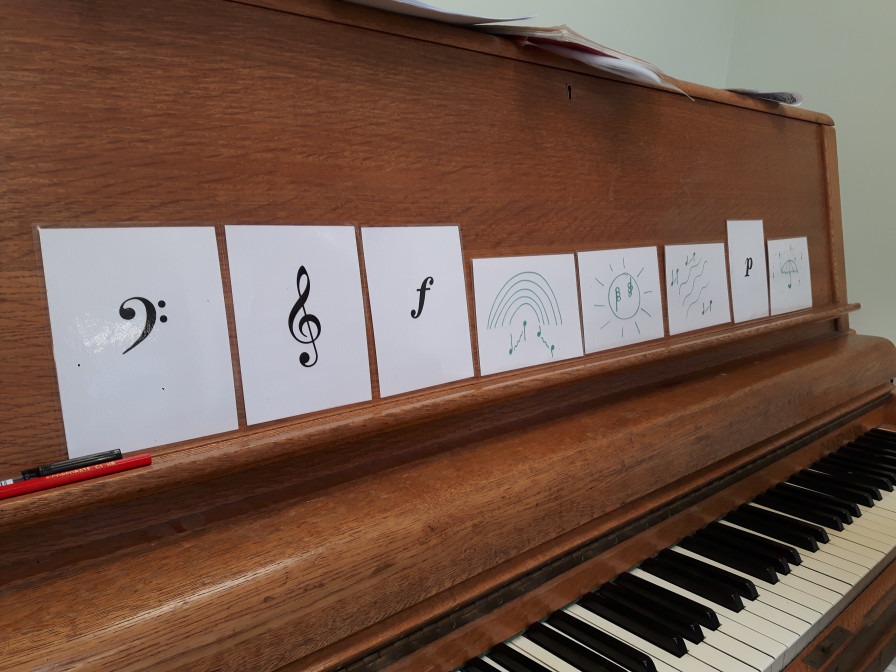Interactive Piano - reflecting on the last year and more

Interactive Piano lessons have been running for about a year and a half now. They are an opportunity for me to work with children with alternative learning needs, teaching them to play the piano.
Over this time the ways I teach have continued to develop and adapt, as I seem to regularly find myself in new situations, where new approaches to learning need to be made.
What does a typical lesson involve? It can be hard to define this exactly! Generally I start with a warm up, of free play, allowing exploration of the piano, whilst I play some supporting chords to give it some musical structure. In this free play we can explore highs and lows, louds and softs, fast and slow. In some lessons I have used this part of the lesson to sing about their recent experiences, asking questions in a simple, but somewhat random, melody line, and listening to an answer back in a similar form. An early introduction to libretto and antiphony! And at the same time encouraging communication, which can sometimes be a challenge for some of the children I work with.
For some individuals, this exploration time may take up most, or even all of the lesson, especially in the early stages of their learning. If they are able, I teach them to focus on the ‘twos and threes’, the pattern of the black notes. From here the natural progression is onto the rest of the geography of the piano, and learning note names. For some, this may happen in the first lesson. For others, we are still working on consistently recognising groups of two or three black notes, and for these we play lots of well-known songs in the key of F# major, until that familiarity starts to set in.
The remainder of the lesson can vary greatly, depending on the individual. There are some children who find reassurance in writing, I use stave whiteboards for them to write on. There are some children who have favourite songs they are able to learn quickly by ear, I use these as a focus to help teach certain elements. There have been moments when I have found myself dancing next to the piano whilst the student plays, expressing components of the music through movement, which seemed to focus how the piano was being played at the time!
So, how do I plan a lesson? Well, with the nature of the children I teach, in a lot of cases it cannot be planned! And I also believe it shouldn’t be planned. There is a lot of ‘going with the flow’ involved. I take along my bag of different resources to each lesson; a variety of books of different styles (Disney songs are a must!), whiteboards, pens, paper, pencils, coloured ‘sticky notes’ for the keys, music-notecards, and a set of wooden animals. These animals have proved useful on several occasions, when a child has been unfamiliar with the alphabet, and especially the upper case, and instead we use ‘cat’, ‘dog’, ‘egg’ instead of ‘C, D, E’ etc. These are from a series called ‘Dogs & Birds’ by Elza Lusher, that I discovered when my own children were very little and starting to play. All of these resources I will draw upon as I feel is appropriate, they are one of the things that help me to be adaptable in the lessons, as the situation dictates.
I feel very lucky that I have been able to work in this way with all the children that have taken part in IP lessons. It would be great to hear stories of children or teachers in similar settings, I am always interested to hear of different approaches and methods, and to share my experiences and techniques if they can be useful!
